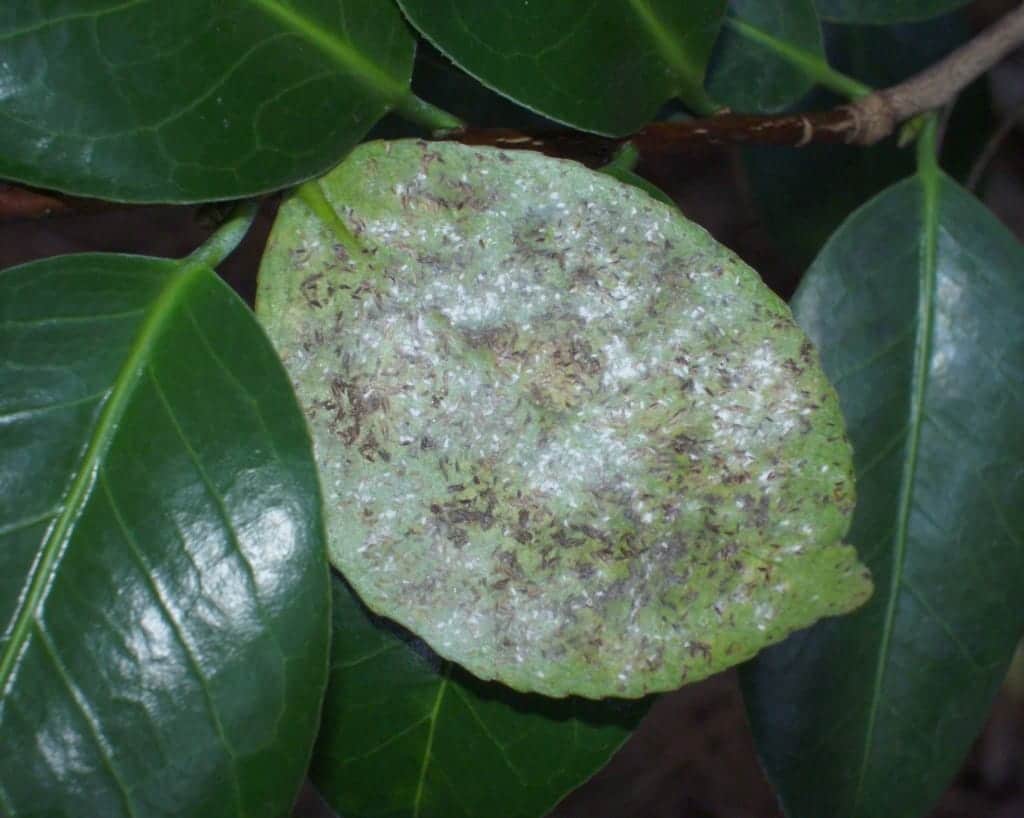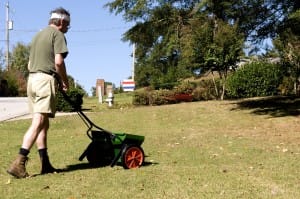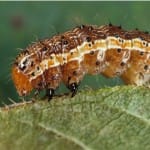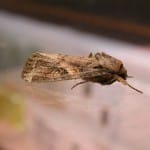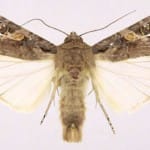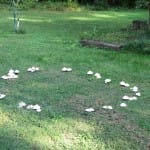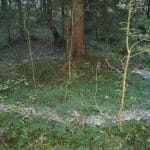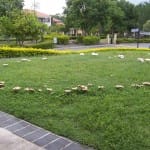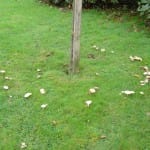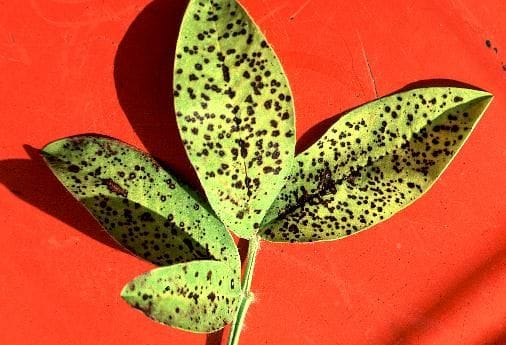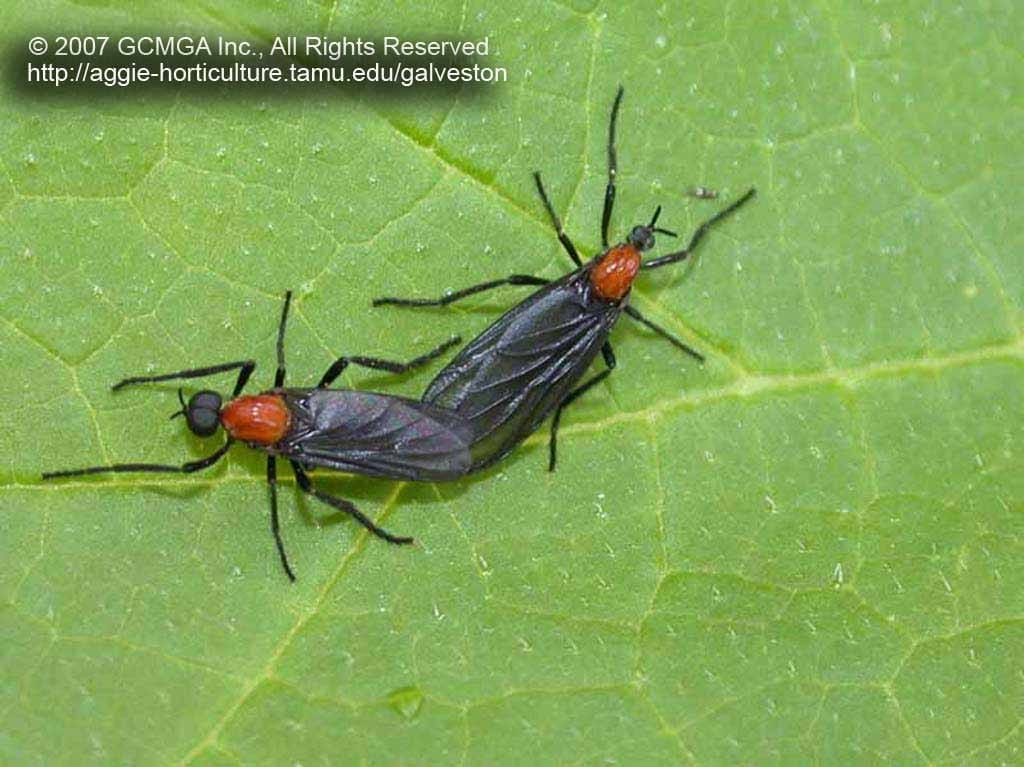Source(s): Louise Weyer, Program Assistant, Northwest District – Cobb County, College of Agricultural and Environmental Sciences.
We are familiar with the saying, “Everyone talks about the weather, but nobody does anything about it.” Weather includes temperature, radiation, light, precipitation, fog, humidity, and wind. Surprisingly, we can modify some of these factors.
Plants undergo climatic influences on three different scales. The macroclimate encompasses large areas with fairly uniform conditions which are influenced by air masses moving over the earth’s surface. These air masses are modified by latitude, mountain ranges, bodies of water and the seasons. The mesoclimate is the local weather in a neighborhood, large park, farm or woods. It is modified by the local terrain, bodies of water, wind, cloud cover and land cover. The microclimate is the condition surrounding individual plants and/or plantings. If we study the dynamics of the mesoclimate and the microclimate, structural and cultural practices can be employed to modify them, making it possible to extend plant distribution and performance.
CLIMATE AND PLANTS
Both temperature and precipitation are dominated by macroclimate conditions. They are the most common limiting climatic factors in plant distribution and performance. It is important to understand the effects of temperature on plants and the factors that influence temperatures in the landscape. Excess precipitation and moisture can be just as damaging to plants as drought. With an understanding of these factors, we can employ cultural practices to use microclimates to advantage.
Sunlight is required for photosynthesis to convert carbon dioxide and water into carbohydrates and oxygen to sustain plant growth and health. High or low temperatures, low carbon dioxide concentrations and water deficits or excesses, can disturb the plant’s metabolism. High temperatures decrease photosynthesis and increase respiration (the breakdown of plant cells producing carbon dioxide). A soil-moisture deficiency can result in leaf-water deficits that cause the stomata (leaf pores) to close limiting the exchange of carbon dioxide. In addition to slowing photosynthesis, water deficits also cause leaves to wilt, to be smaller in size and to shed earlier. Excess water will fill the pore spaces in the soil, replacing the air. Since roots cannot survive in water-saturated soil, the plant will decline or die.
Low temperatures become a problem during the critical periods of spring, autumn, and the coldest part of winter causing frost injury and dieback. Leaves, leaf buds, flower buds are least resistant to low temperatures. Roots are less resistant to freezing than over wintering stems, but usually are adequately insulated by the soil. Minimum temperatures occurring after a warm period can be especially harmful. The fluctuating temperatures cause the bark to split and disrupt the flow of nutrients from the roots.
All plants will be injured or killed above maximum temperatures. Injury varies with species and the stage of plant development. Most plants exposed to temperatures of 104º – 113ºF for 4 hours will show signs of desiccation, summer branch drop, and begin to suffer root death. The soil one inch in from the side of a one gallon container exposed to afternoon sun will reach 110º – 115ºF and the roots on that side of the plant will die.
Trees alter the microclimate of a site. Heat rays are reflected off the surface of leaves. For example: if the air temperature is 84ºF, the surface temperature could be as high as 108ºF. If the area is planted with trees, the surface temperature may drop to 88ºF.
Also, temperature is modified by the reflective qualities of the surface covering in nonshaded areas. Asphalt and concrete absorb greater amounts of solar heat than turf and mulch, and these surfaces radiate more heat during the day and into the evening.
Since cold air is denser than warm air, it flows down a slope, accumulates in the lowest area creating a frost pocket and displaces the warmer air upwards. Plants grown in a frost pocket may have cold damage. They will emerge and bloom later than those planted elsewhere in the garden. Soil temperatures matter most if you are trying to encourage earlier blooms.
Wind affects plant growth by increasing transpiration (evaporation of water) and carbon dioxide uptake and decreasing shoot elongation. High winds can deform plants and seriously damage them. Changes in wind speed are accompanied by changes in air temperature and humidity.
Water runoff from paved surfaces, buildings and impervious subsoil strata accumulates in the pore spaces between soil particles reducing the oxygen, which is required for healthy roots to keep the plants supplied with sufficient nutrients for photosynthesis. Also, compaction caused by high usage decreases soil pore space, affects drainage and impairs root growth.
ANALYZING MICROCLIMATES
Do a microclimate analysis of your property. (1) Look at seasonal solar radiation patterns. Which areas are expose to direct solar radiation? (2) Which areas are shaded at different times of the day, of the year? (3) Analyze reflective qualities of surface materials in nonshaded or exposed areas.(4) Look at how the wind flows across your property, around structures, down corridors of buildings. (5) What is the direction of the prevailing wind? (6) Locate wet and dry areas, and the flow of rainwater.
Prepare a map of the property indicating the various climatic conditions. Highlight the areas that have different microclimate conditions. This will help determine various plant habitats and horticultural opportunities.
MAXIMIZING MICROCLIMATES
Having identified the various microclimates, one is able to plan and make changes to the landscape. Awareness of how temperature and wind affect plant growth will facilitate selecting plants that are suited for the intended site. Remember to consider the plant’s mature size when selecting plants.
Study the appearance, health, and growth of existing plants. If there appear to be problems, perhaps transplanting to a different microclimate site will revitalize the plant.
Change the location of containers and planters to protect plants from excessive heat and root loss.
Enjoy earlier blooms by placing plants next to paving or structures that radiate heat providing a few degrees of extra warmth. Extend the bloom season by planting in both warm and cool spots. Also a plant can be espaliered against a south wall to take advantage of stored heat and reduced radiation.
Two to three inches of mulch will cool the soil during the summer and retain moisture. On the other hand, several inches of mulch will protect plants from cold during the winter.
Use structural elements – buildings, fences, stonewalls – and landscape design elements – trees, windbreaks, berms – to limit sunlight and increase shade, and modify air movement. Air and ground temperatures will be changed by several degrees. On the other hand, removal of these elements will increase sunlight and decrease shade. Over the years as the trees and windbreaks mature, the microclimate will change offering new landscaping opportunities.
Wind is controlled to a distance of 2 to 5 times the height of the barrier in front of a wind obstruction and from 10 to 15 times the height leeward of such a barrier (30-foot high windscreen may reduce wind velocities for 100 yards in front and 300 yards downwind). Wind can be guided to the desired location by the angle of the planting. Shelterbelts are most effective when placed perpendicular to the prevailing winds.
A row of closely planted trees or shrubs, a solid fence, or a long building placed at right angles to a slope can act as a barrier to the flow of cool air but will create a cold pocket on the downward slope side. Plant on the leeward (downside) side.
Develop a low maintenance landscape feature by directing runoff water into a rain garden, which is an area in the landscape that captures a shallow amount of water and holds it for a short period of time, and allows it to seep slowly into the ground. Feature a mix of drought tolerant, wet tolerant and hardy plants such as ornamental grasses, shrubs and self-seeding perennials in this area. Or utilize wet areas for a display of moisture loving plants. If this is not part of your landscape design, install adequate drainage.
Consider macroclimate shifts in weather patterns from wet to drought. Utilize the property map to include xeriscaping techniques and irrigation to compensate for short rainfall.
In addition to enhancing the landscape, modifications can be used to decrease energy costs associated with the interior comfort of the home. Proper placement of trees shade the home, channel air movement and create cooler temperatures near the home in the summertime. Deciduous trees permit solar radiation, effectively lowering heating costs. Also, windbreaks and fences deflect cold winds. Vines grown on masonry walls insulate against cold winter winds and hot summer sun. The outer surface temperature difference may be 8ºF, and the indoor difference as much as 20ºF.
Resource(s):
- Arboriculture, Integrated Management of Landscape Trees, Shrubs, and Vines, Richard W. Harris, Regents/Prentice Hall, Englewood Cliffs, N.J.
- Nature’s Design, Carol A. Smyser, Rodale Press, Emmaus, PN
- “Managing Microclimates,” Renee Beaulieu, Fine Gardening, July/Aug. 1996
- Enviroscaping to Conserve Energy: A Guide to Microclimate Modification,” A. W. Meerow and R. J. Black, Cooperative Extension Service, University of Florida
- Tree Maintenance, P. P. Pirone, Oxford University Press, New York, NY
Center Publication Number: 61
